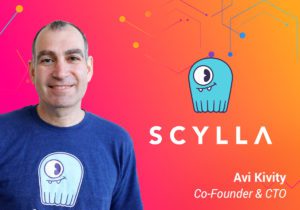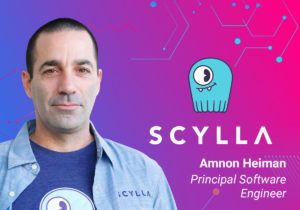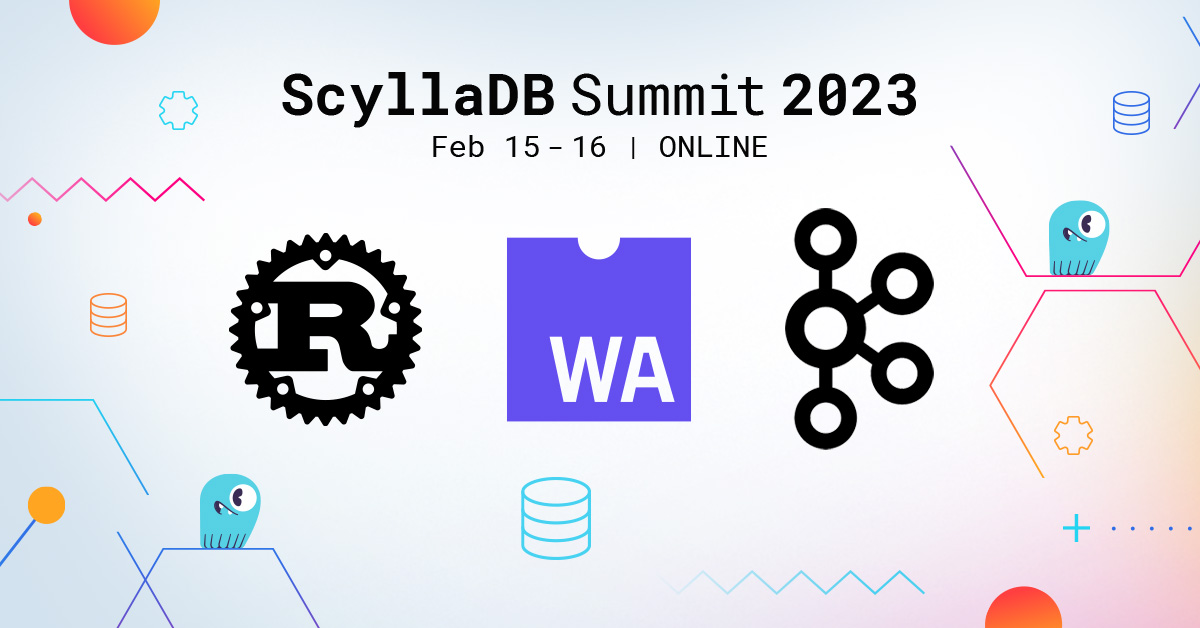
Note: ScyllaDB Summit has concluded! Watch top tech talks on demand.
If your team is exploring or using ScyllaDB, we hope you’ll join us for a deep dive into the innovations and strategies that will help you get the most out of it. Attend ScyllaDB Summit (free + virtual) on February 15 and 16.
With 2 days of 25+ sessions, this is your chance to quickly:
- Discover ScyllaDB’s latest innovations for data-intensive applications and learn what’s on the short-term and long-term roadmap
- Hear how ScyllaDB is being used by engineers at Discord, Epic Games, Strava, Sharechat & other gamechangers
- Get the ScyllaDB engineering perspective on topics like serverless, observability, drivers, consistency algorithms, compaction strategies & our DynamoDB API
- Explore real-world ScyllaDB integrations and best practices: Pulsar, Flink, Ansible, Quarkus, Quine, all-ARM clusters & more
If you haven’t attended a ScyllaDB virtual conference before, be prepared – this isn’t your typical virtual conference that inflicts death by PowerPoint. It’s highly interactive, including the ability to engage with speakers during their sessions and continue the conversation afterward. There will also be contests, opportunities to connect with your peers from around the world, the announcement of this year’s ScyllaDB Innovation Award winners, and more.
Throughout both days, our tech experts will be available to answer your questions in the ScyllaDB lounge. If you’re a ScyllaDB open source user, this is a great opportunity to get your top questions addressed!
This year’s ScyllaDB Summit agenda features talks across a broad array of topics related to data-intensive applications – NoSQL, SQL, event streaming, Rust, WebAssembly, and more. Here’s a spotlight on the slice of sessions that are geared specifically toward ScyllaDB users and the “ScyllaDB curious.”
Leadership Keynotes
To Serverless and Beyond
Dor Laor, Co-Founder and CEO
This year, a set of technologies we’ve been developing for years graduated together to bring you uncompromised performance, availability and elasticity. In this session, Dor Laor covers the major innovations coming next to ScyllaDB core and ScyllaDB Cloud.

The Path to ScyllaDB 5.2
Avi Kivity, Co-Founder and CTO
ScyllaDB co-founder and CTO Avi Kivity will cover 2022 accomplishments and deliveries, including full repair-based-node-operations, distributed aggregation, focusing on goodput at the face of overload, and many other changes.

Use ScyllaDB Alternator to Use Amazon DynamoDB API, Everywhere, Better, More Affordable, All at Once
Tzach Livyatan, VP of Product
Alternator is ScyllaDB’s API compatible with Amazon DynamoDB. Alternator allows you to go beyond the AWS perimeter to run your workload everywhere, on any cloud or on premises, without a single line of code change. The session will show how to save costs by moving workloads from Amazon DynamoDB to ScyllaDB Alternator using real-life examples. We will give insight into the Alternator development process and roadmap and demonstrate how to use it on ScyllaDB Cloud for production and your local machine for testing.

ScyllaDB Cloud Goes Serverless
Yaniv Kaul, VP of R & D
Learn how ScyllaDB Cloud is moving to serverless, transforming its single tenant deployment model into a multi-tenant architecture based on Kubernetes. Discover the engineering innovation required, and the user value of the new architecture, including use of encryption (both at flight and at rest), performance isolation, and the capability to scale elastically.

User Strategies
How Discord Stores Trillions of Messages on ScyllaDB
Bo Ingram, Discord
Learn why and how Discord’s persistence team recently completed their most ambitious migration yet: moving their massive set of trillions of messages from Cassandra to ScyllaDB. Bo Ingram, Senior Software Engineer at Discord, provides a technical look, including:
- Their reasons for moving from Apache Cassandra to ScyllaDB
- Their strategy for migrating trillions of messages
- How they designed a new storage topology – using a hybrid-RAID1 architecture – for extremely low latency on GCP
- The role of their existing Rust messages service, new Rust data service library, and new Rust data migrator in this project
- What they’ve achieved so far, lessons learned, and what they’re tackling next

ScyllaDB at Strava
Phani Teja Nallamothu, Strava
How Strava uses ScyllaDB Enterprise for a variety of use cases, including a look at how ScyllaDB integrates with their architecture and a deep dive into several use cases.

Using ScyllaDB for Distribution of Game Assets in Unreal Engine
Joakim Lindqvist, Epic Games
How Epic Games is using ScyllaDB for distribution of large game assets used by Unreal Engine across the world —enabling game developers to more quickly build great games.

Worldwide Local Latency With ScyllaDB
Carly Christensen, ZeroFlucs
How ZeroFlucs uses ScyllaDB and Go to offer low-latency data processing in a geographically distributed way, with each customer’s data always locally available.

ShareChat’s Journey Migrating 100TB of Data to ScyllaDB with NO Downtime
Chinmoy Mahapatra & Anuraj Jain, ShareChat
How ShareChat built a live migration framework moving 100TB of data into ScyllaDB (for cost and performance benefits) without any downtime.


How Proxima Beta Implemented CQRS and Event Sourcing on Top of Apache Pulsar and ScyllaDB
Lei Shi, Zhiwei Peng, Zhihao Chen – Proxima Beta, Tencent IEG Global
How Level Infinite uses ScyllaDB as the state store of the Proxima Beta gaming platform’s service architecture, including strategies for globally replicating data to simplify configuration management and using time window compaction strategy to power a distributed queue-like event store.



Building a 100% ScyllaDB Shard-Aware Application using Rust
Alexys Jacob, Yassir Barchi, Joseph Perez – Numberly
Numberly’s experience designing and operating a distributed, idempotent, and predictable application 100% based on ScyllaDB’s low-level shard-aware topology using Rust.



Making the Most Out of ScyllaDB’s Awesome Concurrency at Optimizely
Brian Taylor, Optimizely
Optimizely’s client-side strategies for taking full advantage of ScyllaDB’s concurrency while also guaranteeing correctness and protecting quality of service.

Scalable and Resilient Security Ratings Platform with ScyllaDB
Nguyen Cao, Security Scorecard
How SecurityScorecard, a global leader in cybersecurity ratings, uses ScyllaDB for a database with low query latency, real-time data ingestion, fault tolerance, and high scalability—including their migration process from Redis + Presto + Aurora and lessons learned.

From Postgres to ScyllaDB: Migration Strategies and Performance Gains
Sebastian Vercruysse & Dan Harris, Coralogix
How Coralogix shrank query processing times from 30 seconds (not a typo) to 86 ms by moving from Postgres to ScyllaDB.


Key-Key-Value Store: Generic NoSQL Datastore with Tombstone Reduction & Automatic Partition Splitting
Stephen Ma, Discord
Discover Discord’s approach to more quickly and simply onboarding new data storage use cases with their key-value store service that hides many ScyllaDB-specific complexities–like schema design and performance impacts from tombstones and large partitions–from developers.

Aggregations at Scale for ShareChat Using Kafka Streams and ScyllaDB
Charan Movva, ShareChat
How ShareChat handles the aggregations of a post’s engagement metrics/counters at scale with sub-millisecond P99 latencies for reads and writes.

ScyllaDB Engineering
Raft After ScyllaDB 5.2: Safe Topology Changes
Konstantin Osipov, ScyllaDB
ScyllaDB’s drive towards strongly consistent features continues, and in this talk I will cover the upcoming implementation of safe topology changes feature: our rethinking of adding and removing nodes to a ScyllaDB cluster.
Quickly assembling a fresh cluster, performing topology and schema changes concurrently, quickly restarting a node with a different IP address or configuration – all of this has become possible thanks to a centralized – yet fault-tolerant – topology change coordinator, the new algorithm we implemented for Scylla 5.3. The next step would be automatically changing data placement to adjust to the load and distribution of data – our future plans which I will touch upon as well.

Squeezing the Most Out of the Storage Engine with State of the Art Compaction
Raphael S. Carvalho, ScyllaDB
Log Structured Merge (LSM) tree storage engines are known for very fast writes. This LSM tree structure is used by ScyllaDB to immutable Sorted Strings Tables (SSTables) on disk. These fast writes come with a tradeoff in terms of read and space amplification. While compaction processes can help mitigate this, the RUM conjecture states that only two amplification factors can be optimized at the extent of a third. Learn how ScyllaDB leverages RUM conjecture and controller theory, to deliver a state-of-the-art LSM-tree compaction for its users.

Optimizing ScyllaDB Performance via Observability
Amnon Heiman, ScyllaDB
ScyllaDB already does a great job at basic performance optimization at install time and run-time, with IO tuning for your SSDs and real-time dynamic IO and CPU scheduling. Yet there’s more that you, as a user, can do by observing ScyllaDB’s operations. Learn how to get the most out of your database by using these open source tools, techniques and best practices.

Building Next Generation Drivers: Optimizing Performance in Go and Rust
Piotr Grabowski
Optimizing shard-aware drivers for ScyllaDB has taken multiple initiatives, often requiring a complete rewrite from scratch. Learn the work undertaken to improve the performance of ScyllaDB drivers for both Go and Rust, plus how the Rust code base will be used as a core for drivers with other language bindings going forward. The session highlights performance increases obtained using techniques available in the respective programming languages, including shaving performance off Google’s B-tree implementation with Go generics, and using the asynchronous Tokio framework as the basis of a new Rust driver.

Retaining Goodput with Query Rate Limiting
Piotr Dulikowski, ScyllaDB
Distributed systems are usually optimized with particular workloads in mind. At the same time, the system should still behave in a sane way when the assumptions about workload do not hold – notably, one user shouldn’t be able to ruin the whole system’s performance. Buggy parts of the system can be a source of the overload as well, so it is worth considering overload protection on a per-component basis. For example, ScyllaDB’s shared-nothing architecture gives it great scalability, but at the same time makes it prone to a “hot partition” problem: a single partition accessed with disproportionate frequency can ruin performance for other requests handled by the same shards. This talk will describe how we implemented rate limiting on a per-partition basis which reduces the performance impact in such a case, and how we reduced the CPU cost of handling failed requests such as timeouts (spoiler: it’s about C++ exceptions).

Integrations and Ecosystem
CI/CD for Data – Building Data Development Environment with lakeFS
Vinodhini S Duraisamy, Treeverse
How to use lakeFS and ScyllaDB to quickly set up a development environment and use it to develop/test data pipelines and products, including best practices for safety and automation.

Integrating ScyllaDB with Quarkus
Joao Martins, iFood
How Joao Martins from iFood, Brazil’s top food delivery company, integrates two powerful cloud native technologies: ScyllaDB and Quarkus.

Sink Your Teeth into Streaming at Any Scale
Timothy Spann & David Kjerrumgaard, StreamNative
How to build a low-latency scalable platform for today’s massively data-intensive real-time streaming applications using ScyllaDB, Pulsar, and Flink.


x86-less ScyllaDB: Exploring an All-ARM Cluster
Keith McKay, ScaleFlux & Mike Bennet, Ampere
How ScyllaDB performs on Ampere ARM-powered servers and ScaleFlux fast SSDs, as well as how to get the most out of your storage using ScaleFlux’s built-in compression and ScyllaDB’s Incremental Compaction Strategy.


Maximum Uptime ScyllaDB Cluster Orchestration with Ansible
Ryan Ross
How to orchestrate your ScyllaDB clusters with confidence using Ansible, including tangible code snippets to help operators and developers safely make changes to their ScyllaDB clusters. These are tips learned the hard way in production so you don’t have to.

Build Low Latency, Windowless Event Processing Pipelines with Quine and ScyllaDB
Matthew Cullum, thatDot
How to build an event processing pipeline that scales to millions of events per second with sub-millisecond latencies while ingesting multiple streams and demonstrates resilient in the face of host failures.

Developing Enterprise Consciousness: Building Modern Open Data Platforms
Rahul Xavier Singh, Anant
How modern open source tools can help synchronize data across applications and open data platforms using low-code ETL/ReverseETL tools. Anant introduces a reference stack that can help you integrate ScyllaDB in your data platform.






